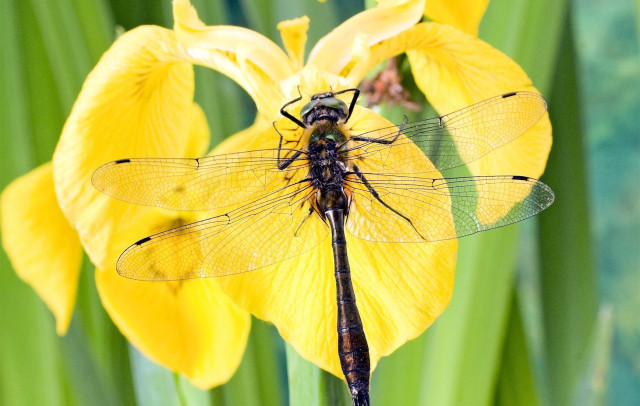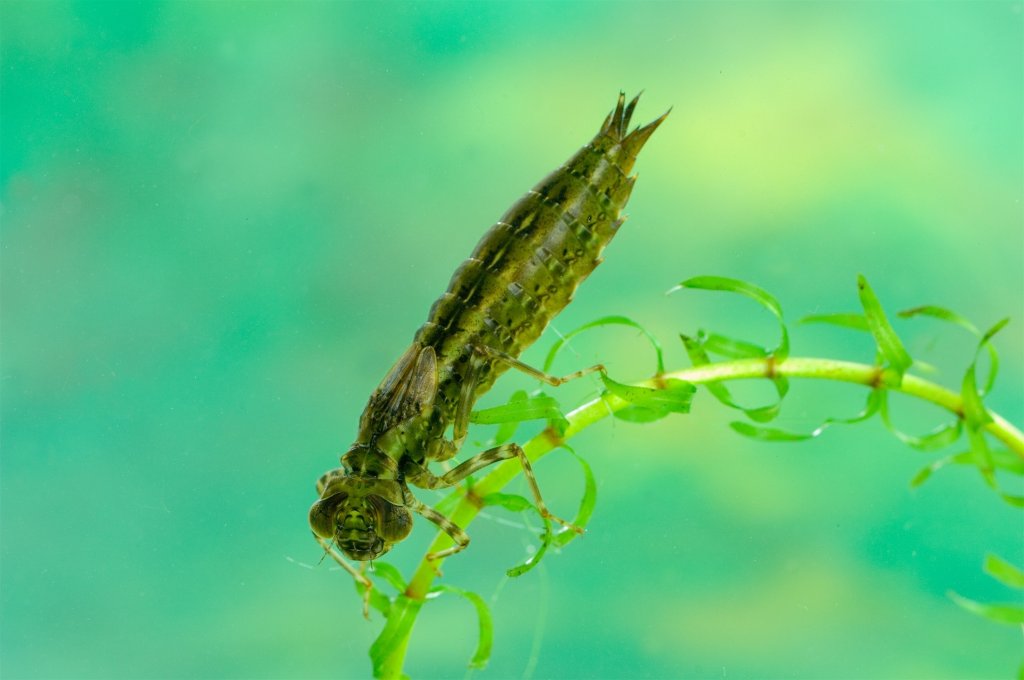It’s easy to look out over the sea and imagine the bustling marine life happening below the surface, but have you ever thought about what might be taking place beneath the glistening surface of our fresh water rivers?
Well one story which might take you by surprise is that of the humble dragonfly. Often only seen buzzing through the air, these extraordinary insects have a whole secret underwater life before we usually set eyes on them.
With a three stage life-cycle - egg, larva and adult - dragonflies are some of the most sci-fi creatures that you’ll find in our fresh waters. With two sets of wings, the hind ones usually shorter, two large eyes on their heads which touch at the top and a long abdomen made up of ten sections, these alien-looking insects can often be spotted darting over rivers, or resting on plants at the edge of water. But it’s their life under the surface that is most fascinating.
Female dragonflies lay hundreds of eggs during their short adult lives, often over just a few days or weeks. The eggs are already fertilised by the male, who will either stay joined to the female or will hover nearby until the eggs are deposited. Most dragonfly eggs are laid onto plants or mud just under the surface, or some species choose to lay theirs on muddy sections of banks, whilst others are laid directly into the water in a jelly-like substance.
Within two to five weeks the eggs hatch, with tiny prolarva emerging. And so begins their watery life, hidden from our view beneath the surface of our rivers and ponds.
Over the next one to two years (yes it really is that long!) the larva stay in the water and will moult between 5 and 14 times over, growing each time in size and development. Moulting is the process by which they shed a layer of skin, emerging each time bigger and renewed with hunger for more prey, feeding off insect larva, crustaceans, worms and even small fish.
Adding to their alien-like form, dragonfly larva have an extendable hinged jaw which can shoot out in milliseconds to grab a snack. Some species are also covered in tiny hairs which collect silt and other soft sediment to encase themselves in a mini suit of armour as protection against predators. With terrible eyesight they rely on six long legs, antennae and hairs (if they have them) to sense prey and submerged objects.
It isn’t until temperature and daylight length signals it’s time for their final moult that the larva will drag themselves from the water. If you spy what looks like a dragonfly sitting at the water's edge, it’s likely that they are preparing for their last moult and starting to breathe air for the first time. How amazing would it be to witness such a transformation!
Once adult dragonflies, they have only a short few weeks above the water to eat, mate and lay eggs. So next time you’re strolling by a river, or gazing out over a pond, think about these amazing larvae busy feeding, moutling and surviving just beneath the water’s surface.

